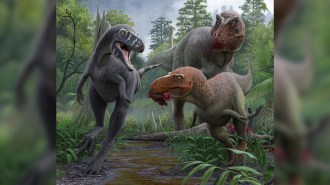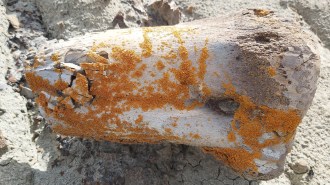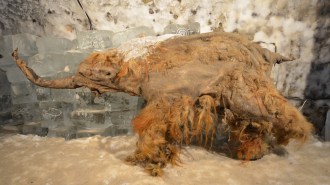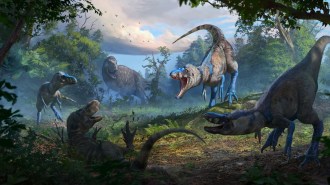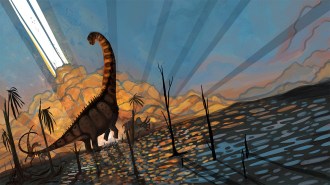Newfound dinosaur wasn’t sticking its neck out
Sauropod dinosaurs, the group of herbivores that included the largest land animals that ever lived, are renowned for their incredibly long necks. Fossils of a newly discovered, 10-meter-long species excavated in South America, however, suggest that this particular sauropod bucked that trend.
Many scientists consider the long necks of most sauropods to be an important feeding adaptation, says Oliver W.M. Rauhut of the Bavarian State Collection for Paleontology and Geology in Munich. Some species in the group gained additional neck length over geologic time both by growing more bones in their neck and by lengthening the individual vertebrae, he notes. In extreme cases, a sauropod’s neck could have 19 bones, some longer than 2 m, and measure four times the length of the animal’s body.
Rauhut and his colleagues, who describe the 150-million-year-old species in the June 2 Nature, dubbed the animal Brachytrachelopan mesai. The creature’s neck, they report, was only about three-quarters the length of its body.
Flanges protruding from the upper surface of the neck vertebrae prevented B. mesai from flexing its neck upward, says Rauhut. Therefore, unlike its long-necked kin that browsed treetop vegetation, B. mesai probably foraged for foliage between 1 and 2 m off the ground.


